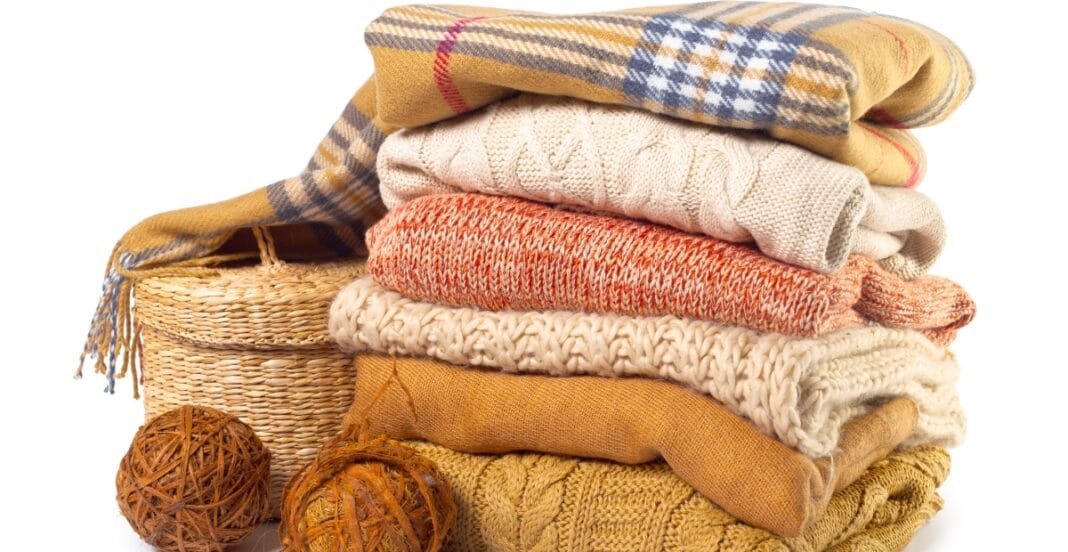Uncovering the Charm of Natural Fiber Textiles
Renowned for their elegance and eco-friendliness, natural fiber textiles are amongst the top leaders of sustainable fashion. These textiles seem to fully satisfy modern consumer needs since people expect a blend of ethical practice and refined aesthetics. Not only do they use renewable resources such as cotton, linen, hemp, and wool, but their breathability and softness is also unparalleled. Unlike synthetic fabrics made from petroleum products which damage the environment, natural fiber textiles are eco-friendly because they naturally decompose over time. Furthermore, these textiles possess rich textures that enhance their prized timeless beauty. With increasing demand for green living options, it is evident that natural fiber textiles are becoming the gold standard for ethical stylish wardrobes all over the world.
Table of contents
- Uncovering the Charm of Natural Fiber Textiles
- The Advantages for the Environment of Natural Fiber Textiles
- An Overview of Fiber Textiles from Nature
- How Different Natural Fiber Textiles Encourage Responsible Buying
- Fashion Influenced by Mother Nature’s Materials
- The Rise in Popularity of Natural Fiber Textiles for Furnishing Homes
- Caring for Your Natural Fiber Garments the Right Way
- Natural Fiber Textiles and the Circular Economy
- Worldwide Advocacy for Natural Fiber Textiles
- Natural Fiber Textiles in Artisan and Cultural Traditions
- Final Thoughts: Reflecting on the Movement Towards Eco-Friendly Fabrics
- FAQs
The Advantages for the Environment of Natural Fiber Textiles
Natural fibers are elegant and eco-friendly because they help protect the environment by reducing pollution and protecting natural resources. Natural fiber textiles are grown with lower amounts of pesticides, herbicides, and synthetic fertilizers which reduces soil and water contamination. Additionally, most natural fibers generate much less pollution when being produced than their plastic counterparts. Also, organic cotton and hemp improve soil health due to regenerative agricultural practices. These textiles also do not contribute to piling up landfills or microplastic pollution since they are biodegradable. Overall, consumers who use natural fiber textiles help combat climate change and environmental damage.
An Overview of Fiber Textiles from Nature
Natural fibers textiles: elegant and eco-friendly describes an assortment of materials ideal for every season and style. One of the most popular natural fibers is cotton, prized for its softness. Linen, or flax, is favor in summer for its cool breathable properties. Wool provides comfort during colder months while hemp is exceptionally durable as well as antimicrobial. Bamboo is a grass but processed into a soft silky fabric that works well for clothing and bedding. Each fiber offers varying functionality to match different fashion needs which makes natural fiber textiles practical and luxurious.
How Different Natural Fiber Textiles Encourage Responsible Buying
Natural fiber textiles, Eco-Friendly And Elegant, directly address ethical consumerism. With regard to clothing, consumers have shifted their focus purchasing decisions towards consideration of the product’s source, combatable social impact and environmental footprint. There is often a direct relationship between natural fiber textile and conscientious supply chains where workers receive appropriate compensation for their services with adequate safety standards. Many companies are adopting these natural fibers and obtaining fair trade agreements and other ethical manufacturing policies. Moreover, they aid traditional farming communities and craftsmen in preserving their culture through modern economics. Therefore, each garment made from natural fiber textile holds closer affectionate relations. Benefits to Health and Comfort from Natural Fiber Textile
Fashion Influenced by Mother Nature’s Materials
Natural fiber textile: Eco-friendly and Elegant benefit health in various ways. Unlike synthetic fabrics, which can irritate the skin, natural fibers breathe well and wick moisture away from the body which reduces the risk of skin infections and allergies for sensitive skin types. They are gentle on the skin making them favorable to children, people with skin problems, or babies. The soothing nature of cotton and bamboo is value among caregivers for its hypoallergenic benefits. Natural fiber textiles provide additional comfort by regulating body temperature throughout seasons; therefore wearing these materials enhances well-being along with comfort.
From stunning linen gowns to beautiful cotton shirts, Natural Fiber textiles grace the world with elegance while also being environmentally friendly. These textiles holding great appeal for designers due to their functionality and the rich colors they can be made into. Cozy wool sweaters are just one example of natural fabrics living up to their potential. Because these materials last in color over time, fashion designers all over the globe look to natural fiber textile not only for casual clothing but high-end dresses as well. The timeless charm of these clothes make sure that every season… they still stay trendy. Thus, these materials continue to shape and enrich sustainable fashion.
The Rise in Popularity of Natural Fiber Textiles for Furnishing Homes
Natural Fiber Textile: Eco-Friendly and Elegant have made their way into interior decoration as they provide comfort as well as prestige. From sheets of soft cotton, to breathable linen curtains and even sturdy jute rugs, the addition of natural fibers instantly elevates the coziness level of a room. These textiles blend excellently with a wide range of design preferences such as rustic, minimalist or bohemian. In addition to their cozy look, these natural textiles also functionally improve breathing and the flow of clean non-toxic air within a space which is very helpful for indoor temperature management. Unlike synthetic materials, natural fibber focus on providing an earthy charm that helps induce calmness and relaxation. Residential textile buyers are leaning towards these home textiles to show support for environmentally friendly principles. Natural Fiber Textiles in Children’s Clothing and Products
Natural Fiber Textiles: Eco-Friendly and Elegant highlights the gentler side of children’s clothing with bamboo, natural organic cotton, and other textile. Young kids and babies often need their skins to be taking care of. Natural fibers are much more comfortable to use, being free from harsh chemicals as well as irritants. Unlike many other materials used for clothes including fabrics like polyester, pure cottons, woolen fabrics and silks this won’t make a child sweaty during physical activity such as playing outside which will prove helpful for energetic toddlers. More parents who care about the health of their children prefer using clothes made out of natural fiber textiles that don’t hurt mother earth.
Caring for Your Natural Fiber Garments the Right Way
Natural Fiber Textiles: Eco-Friendly and Elegant can last for many, many years if they are properly taken care of. For best results, these garments should be washing gently in cold or lukewarm water with gentile, natural detergents that do not include any harmful bleach or chemicals which can weaken the garment. Air drying or line drying is recommend over machine drying to keep the garments’ shape and texture. These textiles also need a bit of ironing on low heat which makes them look better considering that unlike polyester textiles, these garments become softer and more pleasant looking as they grow older. Proper care along with maintenance helps reduce garment waste and supports a healthier environment.
Natural Fiber Textiles and the Circular Economy
The article, “Natural Fiber Textile: Eco-Friendly and Elegant,” emphasizes how natural fiber textile bolster the circular economy. Like several other materials, textiles made from natural fibers are biodegradable as well as compostable. Unlike synthetic fabrics that remain half decayed for centuries on land or in oceans, organic materials decompose naturally and enrich the soil. Notably, many brands have adopted garment collection chains to harvest used clothes made from natural fibers for recycling or resale. This approach minimizes pollution while promoting resource conservation and ethical production through responsible consumption.
Environmental factors, technology, and construction methods have enabled development in the fields of design and production. Designers and scientists are finding better methods for the creation and processing of these materials. For instance, waterless dyeing methods along with plant dyes reduce pollution. Blending natural fibers with other eco-friendly materials also boosts strength, elasticity, and moisture control. 3D weaving as well as zero waste design patterns minimize textile waste. These innovations put the use of natural fiber textile on the leading edge of sustainable fashion technology.
Recent technological improvements only make textiles more useful in contemporary life while reinforcing their importance throughout history, which is always exciting for what’s possible next
Worldwide Advocacy for Natural Fiber Textiles
Global initiatives advancing ethical fashion also support Natural Fiber Textiles: Eco-Friendly and Elegant. GOTS, Fair Trade, and The Sustainable Apparel Coalition are proponents of natural fibers for textiles. These organizations have granted certifications which guarantee responsible practices in production, labor, and the environment. Some countries have started incentivizing sustainable farming alongside eco-friendly manufacturing. These initiatives aim to increase awareness and empower responsible consumerism. Therefore, natural fiber textiles are becoming more mainstream rather than just an alternative option found in fashion and lifestyle sectors.
Natural Fiber Textiles in Artisan and Cultural Traditions
Natural fiber textiles: eco-friendly and elegant have a long history intertwined with artisan traditions. From all corners of the world, natural fibers have been used for centuries by indigenous peoples to make clothing, rugs, socks, and even ceremonial garments. Different cultures expressed their unique artistry: Indian women wear handwoven cotton saris, Peru boasts alpaca wool garments, and Africa has mud cloth fashion. Purchasing natural fiber products sustain these ancient handicraft skills while providing decent wages to artisans. Moreover, these creations tell stories that are often associated with art and craftsmanship – something that is inexistent in mass-produced goods. Therefore buying handmade textiles fosters cultural conservation while promoting ethical global commerce.
Final Thoughts: Reflecting on the Movement Towards Eco-Friendly Fabrics
Natural Fiber Textile: Eco-Friendly and Elegant marks a transition to more beautiful and responsible ways of living. These textiles are exceptionally comfortable, agelessly stylish, and sustainable. They provide an uncompromised advantage when shopping for clothes, home pieces, or even baby products. Supporting such textiles means one supports ethical labor practices while reducing their environmental footprint alongside investing in enduring quality. With growing consumer awareness, the already rising needs of natural fiber textiles are bound to increase further. Such fabrics epitomize far more than textiles – rather a guiding principle that allows one to seamlessly integrate cherished values into everyday choices with grace and sophistication.
FAQs
Natural fiber textiles are fabrics made from plant or animal sources like cotton, linen, wool, or silk. These materials are biodegradable, breathable, and ideal for sustainable fashion.
They require less energy and chemicals during production, decompose naturally, and reduce environmental pollution compared to synthetic fabrics.
Yes, many natural fibers like hemp and wool are known for their strength and longevity when cared for properly.
Natural fibers provide a soft, breathable texture and drape beautifully, enhancing both comfort and sophistication in any outfit.


